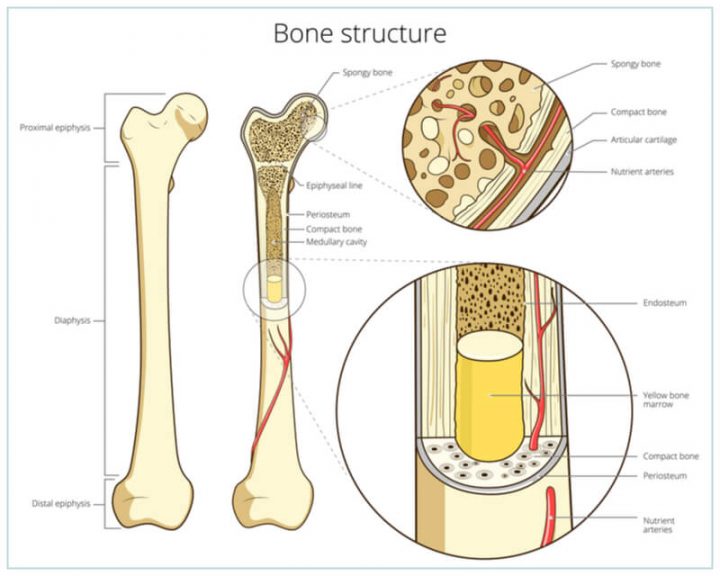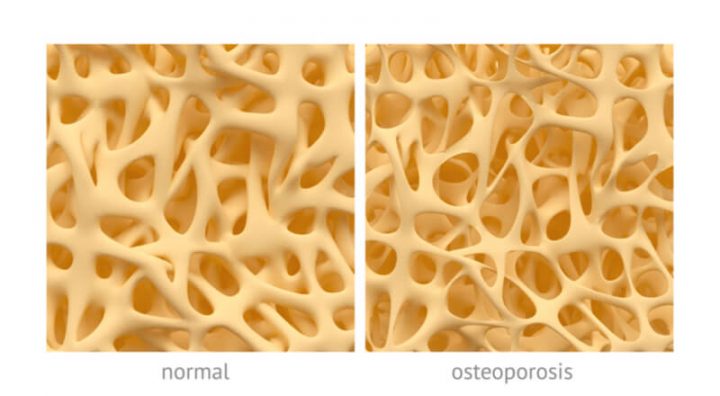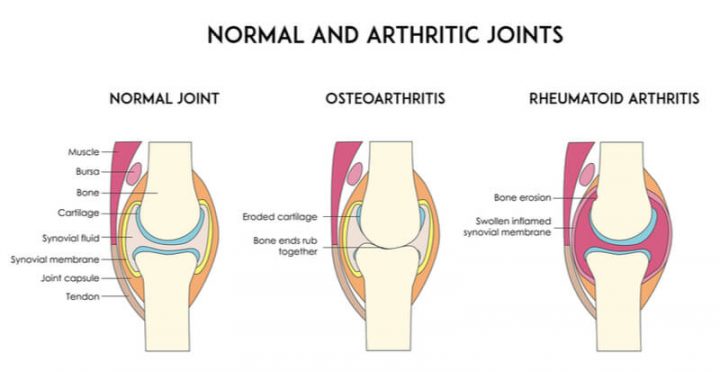Our ever-changing understanding of the anatomical elements in aging changes in our bones, joints, and ligaments have allowed for efficient treatment and early prevention. It’s good to know that these changes are common and oftentimes relate to joint and hip pain, such as osteomalacia, and a variety of other medical conditions.
As one of the earliest changes, because of the thinning of the cartilages and the decrease in lubricating fluid, our joints will begin feeling stiffer. The bones also experience a decrease in resistance, making them more brittle and prone to breaking.

Adding on to this, the causes below can also contribute to the bones’ degradation and changes.
- Shortening of the spine
- Increased weight gain
- Increased possibility of the body’s ability to reuse calcium in bones instead of keeping them in the bones
- Wear and damage sustained over time
Various types of hip and joint pain are among the earliest symptoms of degeneration, requiring an early assessment and potential treatment in order to prevent further problems.
Changes in our bones during the aging process

The bones have two primary layers. The outer, tough shell which covers the entirety of the bones called the periosteum, and the inner section where the tunnels and canals run through. The blood and lymphatic vessels run through this inner section, carrying the necessary nourishment for the bones.
Bone tissue degeneration, clinically known as osteolysis, is a condition which relates to the deterioration of the bone tissues and loss of functionality. This is most commonly reported in individuals aged 65 and above.
The primary cause of the changes we experience in our bones and joints is aging. The sustained wear combined with a loss of minerals can lead to a decrease in functionality and durability. Bone tissue degeneration is also attributed to certain underlying disease and conditions.
Different types of bone health problems

Osteoporosis is a bone disease resulting from the long-term lack of calcium intake. Poor eating habits or certain eating disorders play a major role in the development of this disease. Calcium is the primary mineral the bones rely on. It is credited for the growth, strength and durability of bone tissue, meaning that a prolonged deficiency can lead to low bone density, an elevated risk of breaking and early bone loss.
The symptoms of osteoporosis are characterized by:
- Sudden flashes of severe pain, especially when standing or walking
- Restricted flexibility when bending or twisting the body
- Bones easily fractured
- Loss of height

Osteomalacia is a similar condition, which weakens the bones by softening the usually tough, outer layer. The primary result is that the bones can bend more easily, effectively increasing the risk of breaking.
People living in regions with limited sunlight are more likely to develop this condition, as osteomalacia is primarily caused by Vitamin D deficiency. However, an extended lack of calcium or phosphate can also be the cause.
It is worth noting that Vitamin D intake shouldn’t be limited to sunlight exposure alone, as it can be obtained through a multitude of foods. Vitamin D deficiency and, in terms, osteomalacia, can also be caused by poor dietary choices, despite receiving plenty of sunlight.
The leading symptoms of osteomalacia are:
- Muscular weakness, spasms and cramps
- Walking difficulties
The other symptoms such as numbness around the limbs and mouth or the sensation of pins and needles are characteristic to calcium deficiency, but can also act as an indicator for osteomalacia.
How aging affects the joints
The musculoskeletal system is a collection of bones, joint, ligaments and other connective tissues. While the bones make up the rigid structure in our bodies, the joints act as bending points, granting us the ability to move.

Joint pain differs from bone pain primarily because unlike the latter, joint pain is only present when we move. It will, however, surface when we attempt to mobilize our bodies and actively bend the joints. This heavily affects our daily lives as it makes basic tasks such as walking painful, decreasing the quality of life.
The causes of joint pain are often times similar to bone pain, including but not limited to aging, underlying conditions and injuries, all of these accumulating and resulting in wear and damage.
Common types of joint pain
Osteoarthritis is the most common form of arthritis, targeting the knee, hip or spine joints, but this list is not exhaustive. It occurs when the cartilage cushions, located at the end of the bones, wear out.
The symptoms include joint pain, stiffness, and tenderness of the affected joint. In some cases, the affected joint can also appear larger and experience mobility restraints.

Rheumatoid arthritis is an auto-immune disorder, often times encountered in the hands and wrists.
Its symptoms include joint pain, tenderness, stiffness and a sensation of warmth. These symptoms are generally worse in the morning or following prolonged periods of rest, which is a unique characteristic of rheumatoid arthritis.
What can be done about bone and joint pains?
The best way to combat bone and joint pain is to prevent it altogether. It is never too late to start working on your long-term health, and in the case of bone and joint pain, light exercise and a healthy, nutritious diet play an essential role.
If you are already experiencing bone or joint pain, platelet-rich plasma injections are a non-surgical form of treatment which accelerates the natural healing process in your joints.

In some cases, surgical intervention might be required. A knee replacement surgery, or a hip replacement surgery, can help to remove the affected areas of the joint, or the joint in its whole, and replacing them with prostheses. This effectively gets rid of the pain and restores the patient’s mobility.
Ultimately, the best piece of advice is to seek professional care from a qualified orthopaedic doctor. A trained professional, through an early assessment and diagnosis can recommend the most adequate form of treatment in order to prevent or cure most types of bone and joint pain.
One of the easiest ways to get ahead of bone health is with a bone mineral density screening. Top ranking in our list of recommended orthopaedic doctors in Singapore is Dr Mizan Marican, who although specializes in lower limb surgery, who offers extensive and detailed screening packages.




